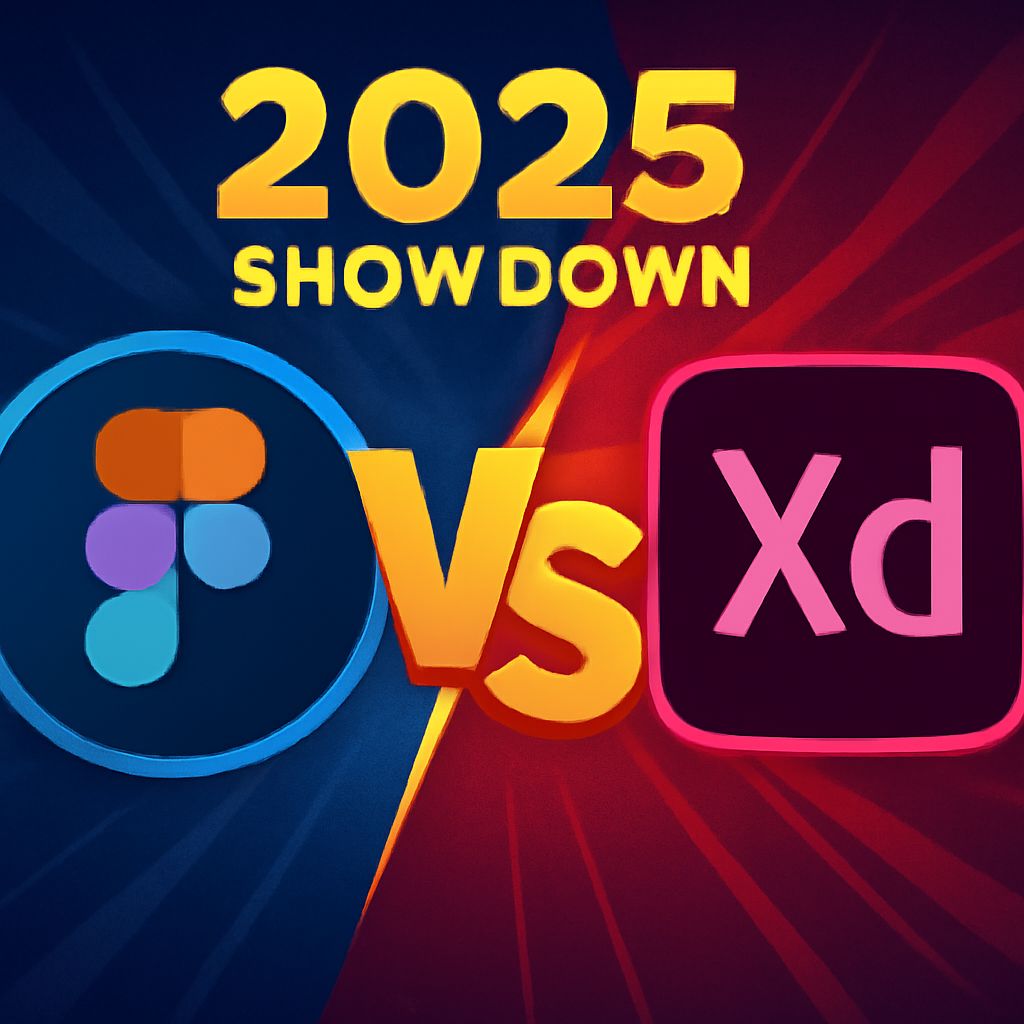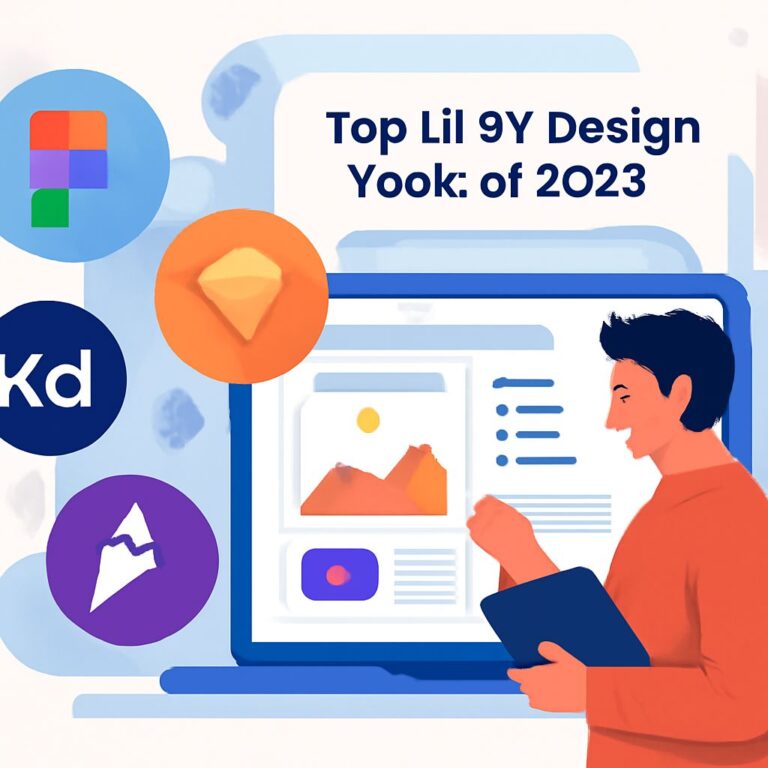Table of Contents
Introduction
In the ever-evolving world of design tools, two heavyweights have emerged as the frontrunners for user preference: Figma and Adobe XD. As we approach 2025, designers are faced with the crucial decision of which platform to adopt for their projects. Both tools offer a plethora of features tailored for UI/UX design, prototyping, and collaboration, yet they also come with their unique strengths and weaknesses. This article delves into a detailed comparison of Figma and Adobe XD, examining their capabilities to determine which tool truly reigns supreme.
User Interface and Experience
A clean and intuitive user interface is essential for any design tool. Both Figma and Adobe XD offer user-friendly environments, but they present these qualities in different ways.
Figma
- Web-Based Accessibility: Figma operates entirely in the browser, allowing designers to work seamlessly across different devices without the need for installation.
- Real-Time Collaboration: The platform’s real-time collaboration features enable multiple users to work on the same file simultaneously, making it an excellent choice for team projects.
- Component System: Figma’s robust component system simplifies the design process, allowing for easy reuse and updating of design elements.
Adobe XD
- Native Application: As a native application, Adobe XD provides a more responsive experience, utilizing system resources efficiently.
- Simplified Interface: Adobe XD’s interface is designed to minimize clutter, making it easy for new users to navigate and find tools.
- Integration with Creative Cloud: Users of Adobe’s ecosystem benefit from seamless integration with other Adobe applications, such as Photoshop and Illustrator.
Design Features
When it comes to design capabilities, both tools have unique offerings that cater to different needs.
Figma’s Design Features
- Vector Graphics: Figma excels in vector graphic design, making it ideal for creating scalable designs without compromising quality.
- Plugins and Extensions: A rich ecosystem of plugins enhances Figma’s functionality, providing tools for everything from accessibility to design systems.
- Design Systems: Powerful design system capabilities allow teams to create consistent UI elements and styles, promoting uniformity across projects.
Adobe XD’s Design Features
- Responsive Resize: This feature automatically adjusts the size of design elements when the artboard is resized, streamlining the design process.
- Artboard Management: Adobe XD offers efficient artboard management, allowing designers to create and organize multiple screens effortlessly.
- Voice Prototyping: A standout feature, voice prototyping allows designers to create interactive voice experiences, catering to a growing trend in UX design.
Prototyping Capabilities
Prototyping is a critical aspect of design, allowing designers to demonstrate their concepts and gather feedback. Both Figma and Adobe XD offer robust prototyping features.
Figma Prototyping
- Interactive Prototypes: Figma enables the creation of interactive prototypes with ease, allowing for transitions and animations to showcase user flows.
- User Testing: Built-in user testing capabilities help designers gather insights on usability and functionality before launching a product.
- Shareable Links: Prototypes can be shared via links, facilitating easy access for stakeholders and clients to review designs.
Adobe XD Prototyping
- Auto-Animate: This feature allows for the creation of smooth animations between artboards, enhancing the presentation of user interactions.
- Device Preview: Designers can preview prototypes on actual devices, ensuring that the final product meets user expectations.
- Feedback Tools: Adobe XD offers in-app commenting features, allowing stakeholders to leave feedback directly on the design.
Collaboration and Sharing
In today’s collaborative workspace, the ability to share designs and gather feedback is vital. Here’s how both tools stack up in this aspect.
Figma Collaboration
- Real-Time Editing: Figma’s standout feature is real-time collaboration, where multiple users can edit simultaneously, enhancing teamwork and productivity.
- Commenting Features: Stakeholders can leave comments directly on the design, streamlining the feedback process.
- Version Control: Figma allows users to access previous versions of their designs, making it easy to revert changes if needed.
Adobe XD Collaboration
- Co-Editing: Adobe XD recently introduced co-editing features, although they aren’t as seamless as Figma’s real-time collaboration.
- Design Sharing: Users can share designs via links, providing stakeholders with access to view and comment on the work.
- Feedback Integration: Direct integration of feedback within the design app enhances communication between designers and stakeholders.
Pricing Structure
The pricing models for both tools can influence a designer’s choice, especially for teams and freelancers.
Figma Pricing
| Plan | Cost | Features |
|---|---|---|
| Starter | Free | Limited to 3 projects, basic features |
| Professional | $12/editor/month | Unlimited projects, real-time collaboration, advanced features |
| Organization | $45/editor/month | Team management, design systems, dedicated support |
Adobe XD Pricing
| Plan | Cost | Features |
|---|---|---|
| Starter | Free | Limited features, 1 active shared prototype |
| Single App | $9.99/month | Full access to Adobe XD |
| Creative Cloud | $52.99/month | Access to all Adobe applications |
Conclusion
As we look to the future, both Figma and Adobe XD continue to evolve and improve, each presenting compelling arguments for their usage. Figma shines in its real-time collaboration, web-based accessibility, and extensive plugin ecosystem, making it ideal for remote teams and collaborative projects. Conversely, Adobe XD offers a more integrated experience for users already invested in the Adobe ecosystem, with standout features like voice prototyping and auto-animate. Ultimately, the decision may boil down to the specific needs of the designer or team, their existing workflow, and the types of projects they undertake.
FAQ
What are the main differences between Figma and Adobe XD?
Figma is a browser-based design tool focused on collaboration, allowing multiple users to work in real-time. Adobe XD offers powerful prototyping features and is part of the Adobe Creative Cloud ecosystem, making it ideal for users already invested in Adobe products.
Which tool is better for collaboration, Figma or Adobe XD?
Figma excels in collaboration capabilities, allowing multiple designers to work simultaneously on the same file, while Adobe XD has improved its collaboration features but still lags behind Figma in this aspect.
Is Figma or Adobe XD more user-friendly for beginners?
Figma is often praised for its intuitive interface and ease of use, making it a preferred choice for beginners. Adobe XD has a learning curve, especially for users unfamiliar with Adobe’s interface.
Can I use Figma and Adobe XD for mobile app design?
Yes, both Figma and Adobe XD are well-suited for mobile app design. They offer features like responsive design and prototyping that help designers create user interfaces for mobile applications.
What pricing options are available for Figma and Adobe XD?
Figma offers a free tier with limited features, while its paid plans provide additional functionality. Adobe XD also has a free version, but its full capabilities are unlocked with a subscription to Adobe Creative Cloud.
Which design tool is more powerful for prototyping, Figma or Adobe XD?
Adobe XD is known for its robust prototyping capabilities, including advanced animations and interactions. Figma also offers prototyping features, but some users find Adobe XD’s tools more comprehensive for interactive designs.



